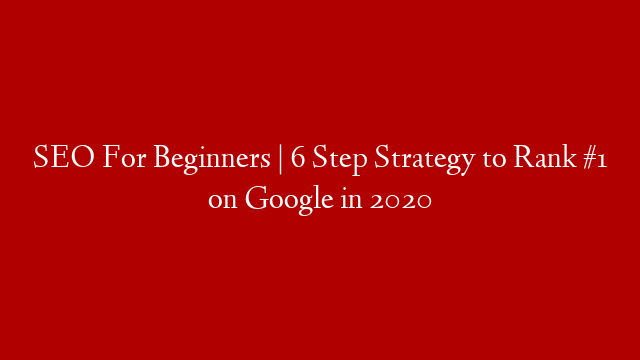SEO is one of the most important aspects of online marketing. It can help your website rank higher in search engine results pages (SERPs), which can result in more website visitors and more customers.
But SEO can be confusing, especially for beginners. Here’s a six-step strategy to help you rank #1 on Google in 2020:
1. Choose the right keywords
The first step in any SEO strategy is to choose the right keywords. These are the terms and phrases that people are likely to use when searching for your product or service.
You can use a variety of tools to help you choose the right keywords, including Google AdWords Keyword Planner and semrush.com.
2. Optimize your website for those keywords
Once you’ve chosen your keywords, you need to optimize your website for them. This means including them in your website’s title, meta descriptions, and header tags.
You can also use them in your content, but don’t overdo it. Google doesn’t like websites that are keyword-stuffed.
3. Build links to your website
One of the most important factors in SEO is link building. This means getting links from other websites to your own. The more links you have, the higher your website will rank in SERPs.
You can build links by publishing guest posts on other websites, participating in online forums, and submitting your website to directories.
4. Optimize your website for mobile
More and more people are using their mobile devices to search for information online. That’s why it’s important to optimize your website for mobile devices.
You can do this by using a responsive design, which will automatically adjust your website to fit any screen size. You can also use mobile-friendly fonts and images.
5. Use social media to promote your website
Social media can be a great way to promote your website. You can share your website’s content on social media, and you can also use social media to build links to your website.
6. Monitor your website’s SEO progress
The final step in any SEO strategy is to monitor your website’s SEO progress. This means tracking your website’s rankings in SERPs and measuring your website’s traffic and conversions.
You can


